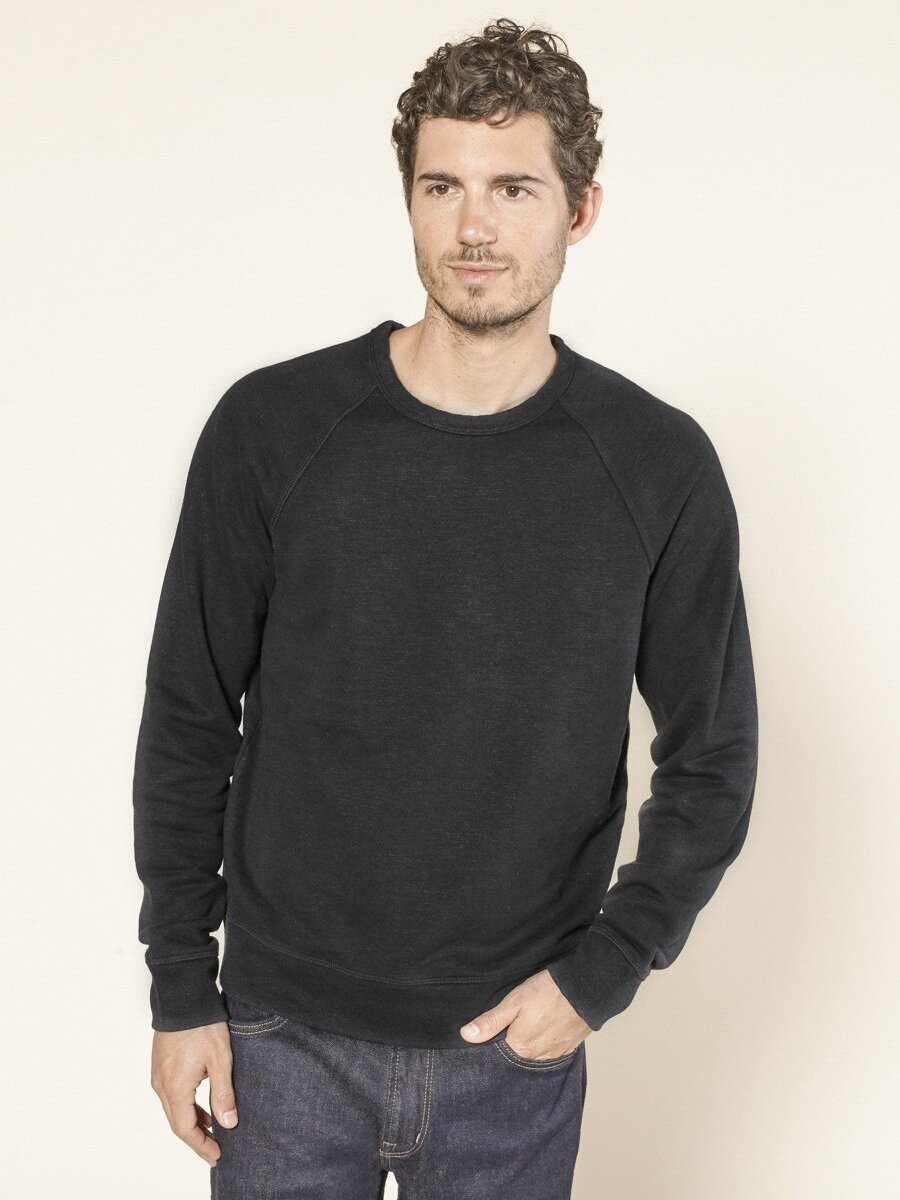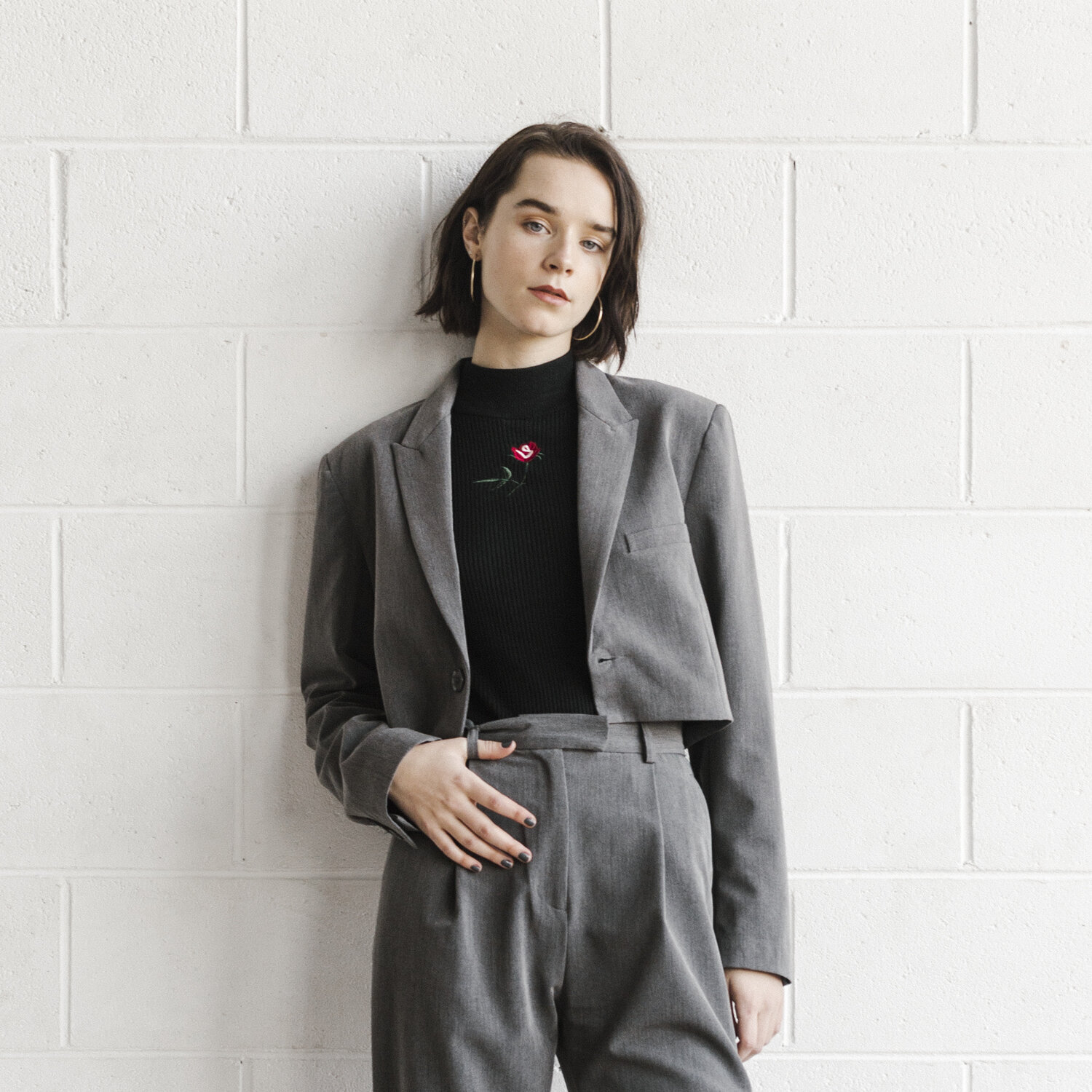What is Hemp Fabric, Why It's Sustainable & Ethical Clothing Brands Who Use It
image from Valani
This post contains affiliate links. As always, views are genuine and brands are truly loved. Thanks for supporting the brands who are working to make this industry a fairer and cleaner place!
What is Hemp Fabric?
Hemp is a bast fiber which comes from the woody stalk of a larger plant. It is celebrated as a particularly sustainable material, which can be used to make t-shirts, towels, knitted garments, socks, bed sheets and all sorts of other products. But why is hemp sustainable, and how is the material made?
How Can Hemp Fiber Be Used?
Before we get into the details of how hemp is made, and what that means for the planet, where are we likely to see hemp fiber? Hemp is a more coarse fiber than one like cotton, so often we see the two fibers blended together as one material. For example, it's very common to see hemp and organic cotton blend t-shirts and underwear made by more sustainably minded brands. With a similar texture to linen, some bedding can be made of hemp, too. Hemp is also able to be woven into thicker materials that make up sturdy canvas bags and rugs, or lighter tweed and plaid styled skirts. For the winter months, hemp can be knitted into yarn - also often blended with other plant fibers - for scarves, sweaters and beanies.
What is a Hemp Plant?
Hemp plants are able to produce all sorts of interesting and useful products, from seeds and oil used in both skincare and food products to concrete, paper, bio-plastics, fashion fibers and beyond. The possibilities with this plant really can seem endless!
Let’s get into the technicalities of what this plant really is. The first thing to note is that hemp plants are not marijuana plants. These are technically the same plant species, but they have been bred for different traits and purposes. Cannabis plants have higher levels of THC, which is the substance that can alter a person’s mental state. Legally, a hemp plant has below 0.3% THC content in dry weight. This is important to understand because while hemp and cannabis do not have the same psychoactive potential, hemp growth is strictly regulated and still sometimes banned because of their shared species type. The legal limitations of hemp growth are unfortunate because the many sustainable products hemp can be turned into are less common than they perhaps could be.
When you compare plants grown for ‘narcotic’ purposes and plants grown for their fiber, the former has a thicker, hard center, while the latter has more bast, with a more hollow center. This is so that more energy can go towards the growth of the fiber bundles of bast - which is what hemp material is made from.
Another interesting element to hemp plants and production is that, at the moment, farmers generally cannot produce hemp seed and seed oil products alongside hemp fiber. This is partially to do with the sex of the plant, which alters the thickness and length of fibers, and because harvesting hemp for fiber normally takes place before seeds would have grown enough to be harvested themselves.
How is Hemp Material Made?
Once hemp crops are harvested, the bast fibers basically need to be peeled off of the stem. This process is called retting. Traditionally, this could be done naturally, with fibers being laid out and weathered over up to a month, so that the wooden center and the bast fibers which are bonded together, can separate out. In this natural method, part of the plant decomposes, making it easier for the fibers to be pulled off the stem and apart.
Nowadays, it’s much more common for hemp retting to take place in a more controlled and mechanical way, using enzyme sprays and chemicals, which is more environmentally impactful. After the retting, the fibers are further processed until they can be made into one long thread for weaving or knitting. Most hemp clothing and bedding is dyed (and sometimes bleached to assist with dyeing) beforehand, too.
What Makes Hemp Sustainable?
Hemp can be grown organically with more ease than other fiber crops because it is such a durable, thick-growing plant. Chemicals that might be added to fields of hemp to remove weeds are often not needed because they are ‘strangled’ by the thick hemp plants.
Organic crops have the benefit of ensuring no pesticide or herbicide pollution, which can harm surrounding insect populations and, in turn, ecosystems. Organic crops also do not have synthetic fertilizers put on them to help growth, which can mean less synthetic nutrients runoff, which can potentially cause eutrophication. Eutrophication leads to reduced oxygen levels in natural waterways full of aquatic life. Manure used as organic fertilizer contains phosphorus that can also lead to the same eutrophication risks.
The fullness of hemp plants that prevents weed growth also means that the crop can be very efficient in its use of land, and that it can grow in a range of different soils very well. Land use efficiency is critical to sustainability because the more land we use for agriculture, the less land we have to support a biodiverse array of plant and animal life.
Hemp can also be grown as a rain fed crop, meaning that it’s grown with no more water than comes out of the sky. This is, of course, a positive, considering that freshwater is a precious resource and one which everyone on the planet needs to survive.
Lastly, the fact that hemp is, of course, a plant, means that it is biodegradable. The greatest thing about this is that 100% hemp material clothing, or clothing made of hemp that’s blended with other plant fibers, won’t hang around for thousands of years after we’ve stopped wearing them. In a world full of harmful microplastics that hurt our oceans and land-based ecosystems, this is great news.
The Cons of Hemp
The key word across some of the many reasons hemp is sustainable is ‘can’. Hemp can be grown organically, and it can be grown as a rain fed crop, but that does not mean it always is.
Hemp is grown non-organically and as an irrigated crop across many parts of the world. This means that the water-saving aspect of hemp is not inherent to the plant, but dependent on the particular way it is farmed.
Let’s talk more about hemp that’s organic or not. It’s worth noting that non-organic crops aren’t always terrible. For example, Bt, a naturally occurring bacteria, is applied over organic cotton, but genetically placed into Bt cotton. This makes the Bt cotton, like the cotton grown in Australia, considered non-organic. However, it also removes the need to spray substances that kill insects which Bt protects cotton from. If we’re talking hemp, pesticides and fungicides can be used to prevent the risk of harmful fungi and bacteria growth, mites, beetles and other bug infestations destroying the crop. It is not sustainable for an entire crop to die off - wasting the resources that were spent growing them. At the same time, there are plenty of pesticides and herbicides that are used carelessly and at rates that are unsafe for surrounding life, as well as for workers on farms. If there is no transparency in hemp supply chains about whether it is organic or not, and if not, how these chemicals are used, that can be a real problem.
All of this means that typically grown hemp, according to data from Sustainable Apparel Coalition, is not so much less environmentally impactful to produce than conventional cotton. This is a good reason to look for organic hemp, and hemp that is transparently grown in a mindful way! There’s lots out there, and it’s worth asking brands about.
This is all to say that hemp is a far more sustainable material than so many others, but as with everything, sustainability in agriculture and fashion is a little more complicated than it may first seem!
Ethical, Sustainable Brands Using Hemp Fabric
There are a whole lot of brands who use hemp to create more sustainable clothes. Below, we’re going to look at just a handful of the brands ethically producing garments with a lower impact on the planet.
salvos
Salvos always works to have low environmental impact in their material and garment production, and uses socially responsible labor practices. We love that.
One of their newer offerings is a hemp and organic cotton blend t-shirt, with a fun sustainability fact written in small print on the chest.
Wearing this t-shirt, you’ll be able to spread the good word of hemp and sustainable fashion, without talking!
Valani
This beautiful brand is on the mission of Lighter Living. They are mothers and daughters with a stake in our future, and stewards of a planet that needs our help. They believe self love and love for the earth are linked, which inspired them to create a fun and flirty clothing line with the smallest footprint possible. They use hemp for several of their designs, as well as Tencel & Banana. Pictured is the Sineth Hemp Top which has perfectly puffed sleeves & goes great with jeans.
WAMA UNDERWEAR
WAMA is a dedicated brand that produces undergarments like boxer briefs, underwear and bralettes.
Hemp is great to wear in these sensitive areas, because it is breathable, gets softer each time you wash it, and according to the brand, is naturally antibacterial.
WAMA garments are made of a blend of hemp and organic cotton. Most of WAMA’s hemp is grown on small, family run organic farms.
Good Studios
A gorgeous, Ethical Clothing Australia accredited brand, Good Studios uses hemp in a whole heap of extremely good ways - true to name. From 100% hemp bed linen, to hemp and organic cotton blend denim, twill and and jersey garments, this is perhaps one of the most widely styled hemp collections out there.
Pictured is the beautiful Hemp Linen Singlet, which even comes with 100% recycled hemp pulp buttons!
Citizen Wolf
Citizen Wolf pioneers in the made to measure world, helping to reduce fashion waste. Making all kinds of t-shirts, singlets, turtlenecks and other tops, Citizen Wolf is totally transparent, producing garments in Sydney, Australia, many of which can be made with an organic hemp and organic cotton blend.
The organic hemp and cotton that the brand uses is certified to be environmentally and socially responsible.
Outerknown
This radical brand, which is Fair Labor Association accredited, has a range of hemp and organic cotton blend sweatpants, sweatshirts, t-shirts, polos, blouses and other clothes for all genders.
None of their hemp clothing is blended with a synthetic material, meaning it will all biodegrade should it ever leave your wardrobe. In fact, 90% of the materials the brand sources are organic, recycled or regenerated.
Delilah Home
If you’re looking for sustainable hemp sheets, Delilah Home is a great choice—they’re actually the first company in North America to have GOTS organic hemp bedsheets! Since hemp is naturally temperature-regulating, these are great for those who tend to run hot at night.
These award-winning soft and luxurious sheets are 50% thicker than most sheets and with a 180 GSM thread count, they offer the ultimate natural softness. Plus, they're responsibly made in a family-run factory in Portugal using state of art machinery and with higher than Fair Trade wages.
Emma Håkansson is the founder and director of Collective Fashion Justice which seeks to create a total ethics fashion system that prioritizes the life and wellbeing of non-human & human animals, as well as the planet, before profit & production. She has written countless articles on ethics, sustainability, and fashion, and has two books due out over the next two years.
image from Valani
This post is sponsored in part by Salvos and contains affiliate links. As always, views are genuine and brands are truly loved. Thanks for supporting the brands who are working to make this industry a fairer and cleaner place!











